Kumail.pk is a Free Platform of
Charts
It can be difficult to interpret Excel workbooks that contain a lot of data. Charts allow you to illustrate your workbook data graphically, which makes it easy to visualize comparisons and trends.
Charts
Charts
Understanding charts
Excel has several different types of charts, allowing you to choose the one that best fits your data. In order to use charts effectively, you’ll need to understand how different charts are used.
Click the arrows in the slideshow below to learn more about the types of charts in Excel.
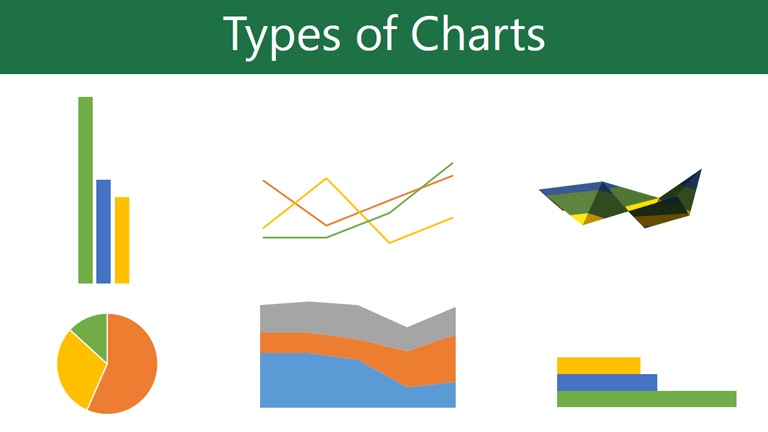
Excel has a variety of chart types, each with its own advantages. Click the arrows to see some of the different types of charts available in Excel.

Column charts use vertical bars to represent data. They can work with many different types of data, but they’re most frequently used for comparing information.

Line charts are ideal for showing trends. The data points are connected with lines, making it easy to see whether values are increasing or decreasing over time.
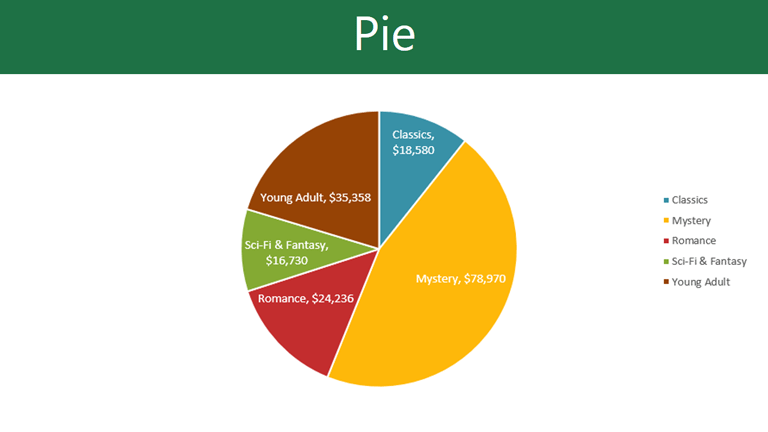
Pie charts make it easy to compare proportions. Each value is shown as a slice of the pie, so it’s easy to see which values make up the percentage of a whole.
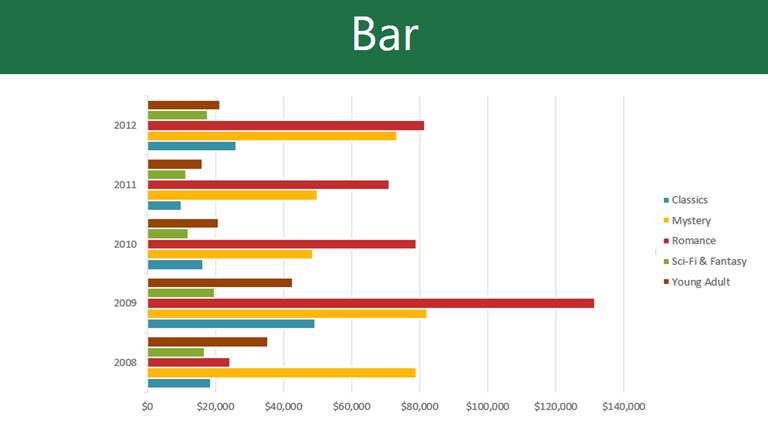
Bar charts work just like column charts, but they use horizontal rather than vertical bars.
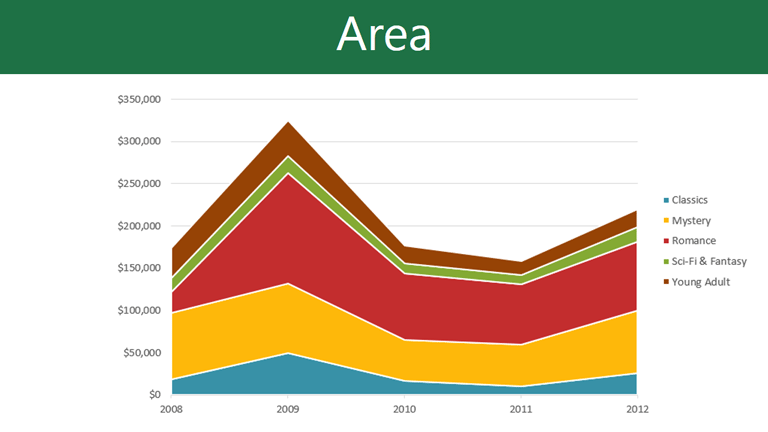
Area charts are similar to line charts, except the areas under the lines are filled in.

Surface charts allow you to display data across a 3D landscape. They work best with large data sets, allowing you to see a variety of information at the same time.

In addition to chart types, you’ll need to understand how to read a chart. Charts contain several different elements, or parts, that can help you interpret the data.
Click the buttons in the interactive below to learn about the different parts of a chart.
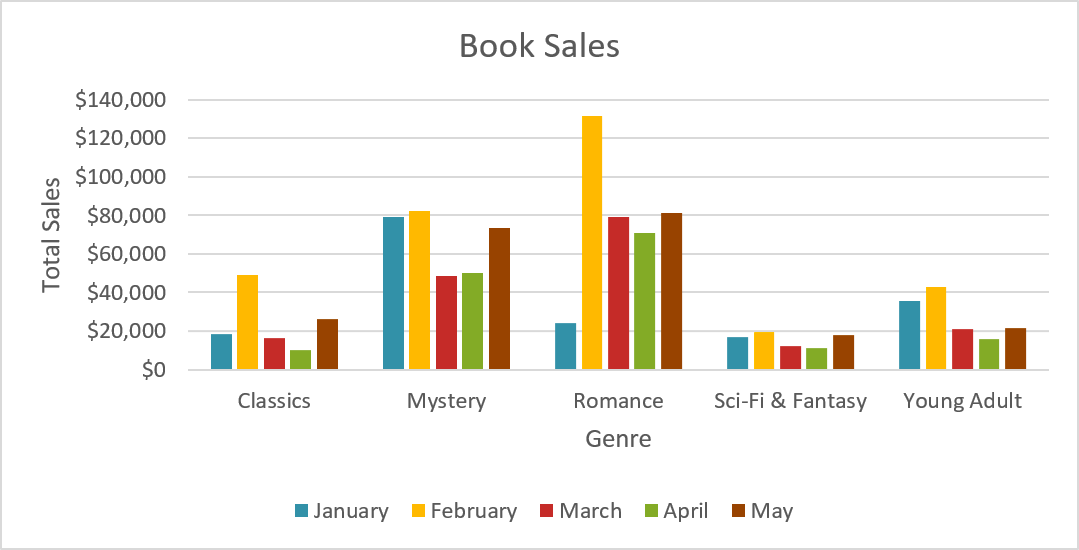
To insert a chart:
- Select the cells you want to chart, including the column titles and row labels. These cells will be the source data for the chart. In our example, we’ll select cells A1:F6.

- From the Insert tab, click the desired Chart command. In our example, we’ll select Column.

- Choose the desired chart type from the drop-down menu.
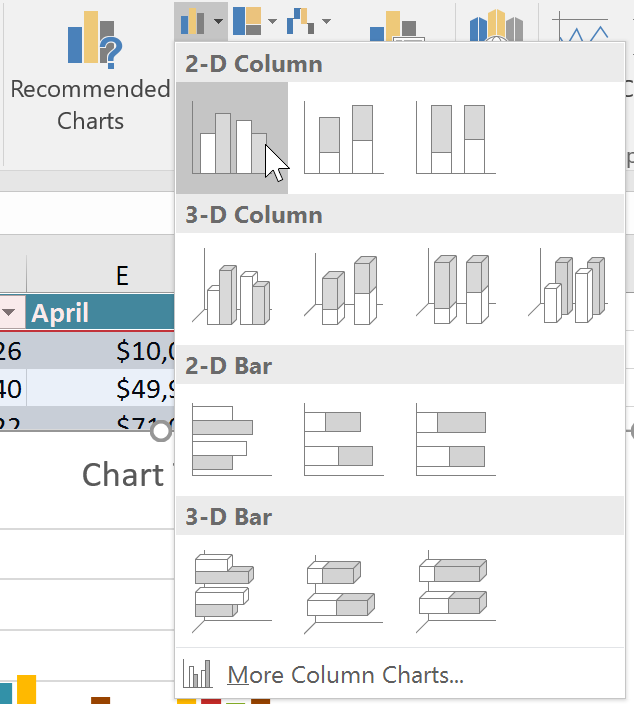
- The Selected chart will be inserted into the worksheet.
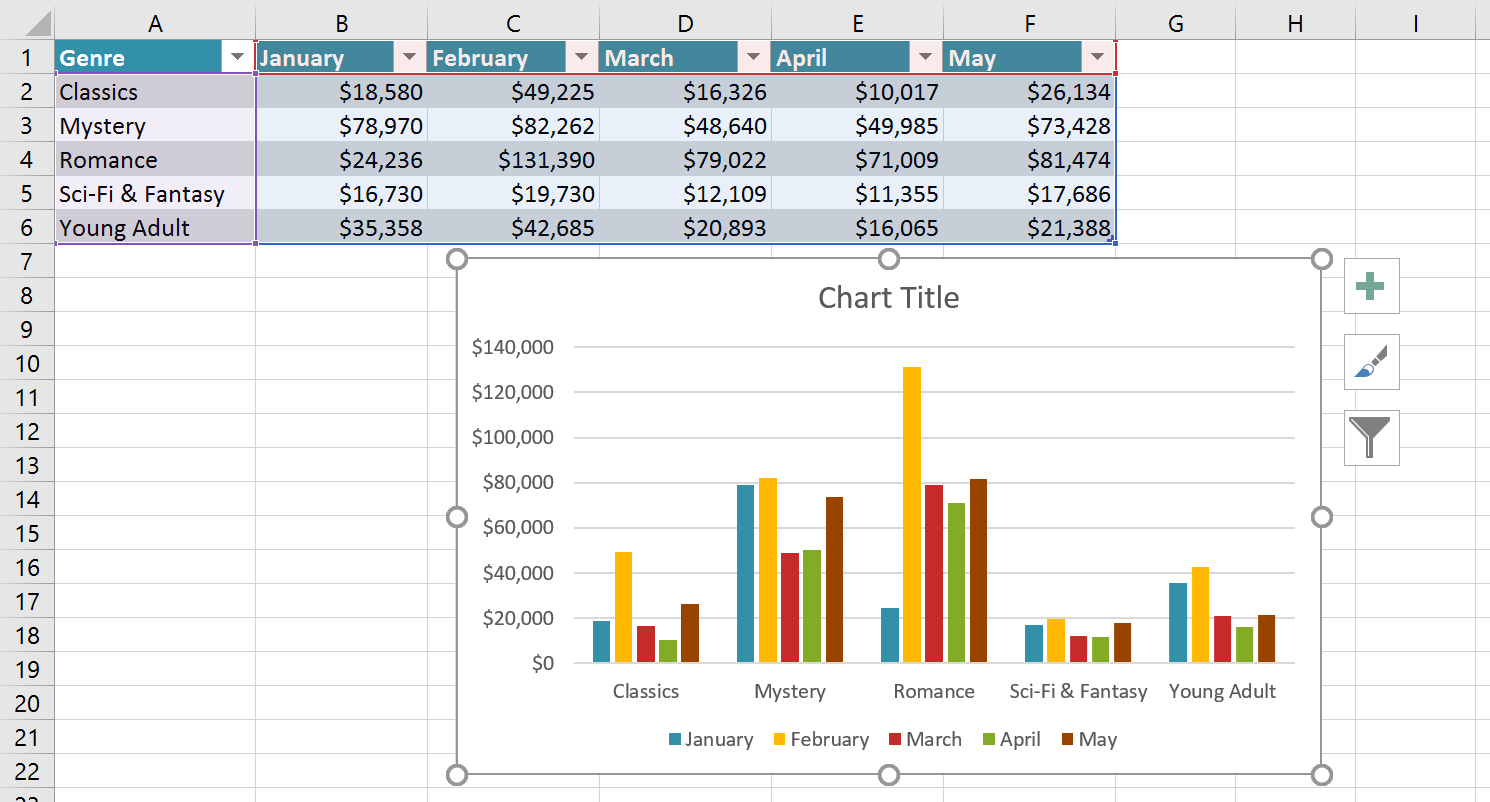
If you’re not sure which type of chart to use, the Recommended Charts command will suggest several different charts based on the source data.

Chart and layout style
After inserting a chart, there are several things you may want to change about the way your data is displayed. It’s easy to edit a chart’s layout and style from the Design tab.
- Excel allows you to add chart elements—such as chart titles, legends, and data labels—to make your chart easier to read. To add a chart element, click the Add Chart Element command on the Design tab, then choose the desired element from the drop-down menu.
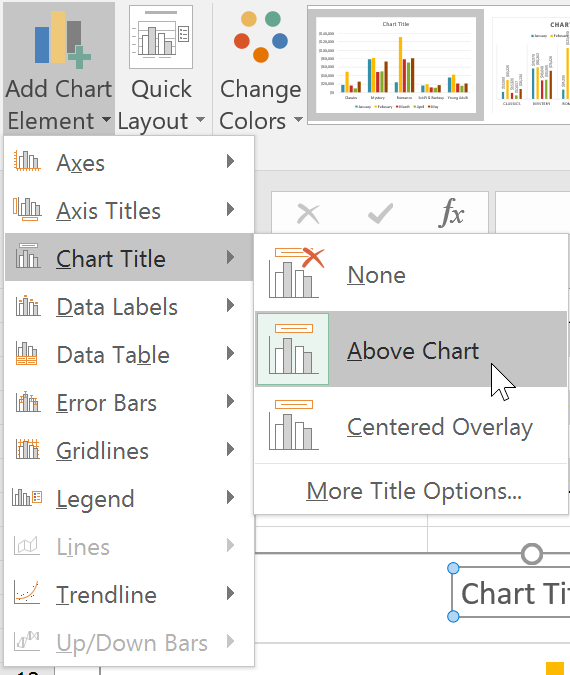
- To edit a chart element, like a chart title, simply double-click the placeholder and begin typing.
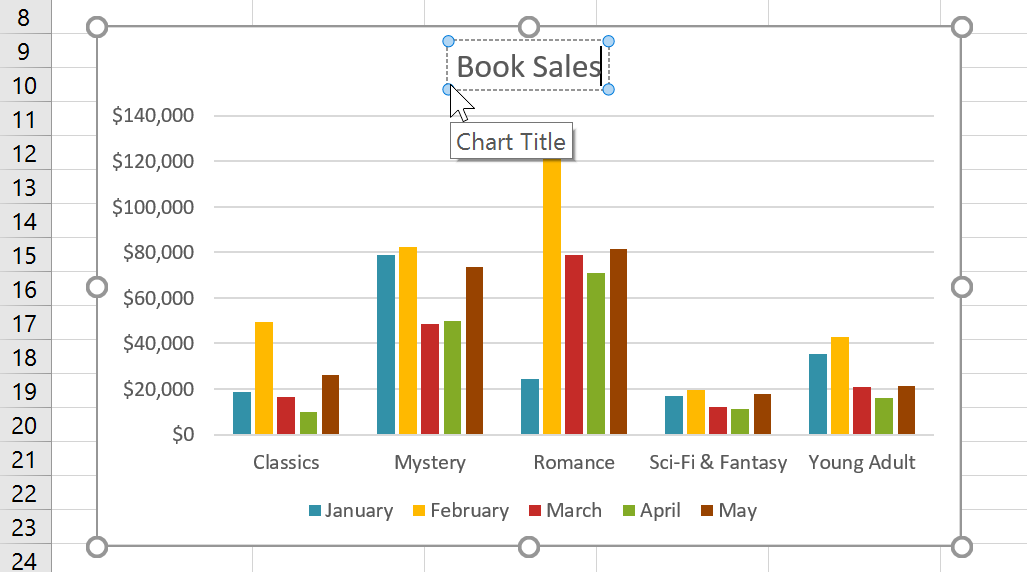
- If you don’t want to add chart elements individually, you can use one of Excel’s predefined layouts. Simply click the Quick Layout command, then choose the desired layout from the drop-down menu.

- Excel also includes several chart styles, which allow you to quickly modify the look and feel of your chart. To change the chart style, select the desired style from the Chart styles group. You can also click the drop-down arrow on the right to see more styles.

You can also use the chart formatting shortcut buttons to quickly add chart elements, change the chart style, and filter the chart data.
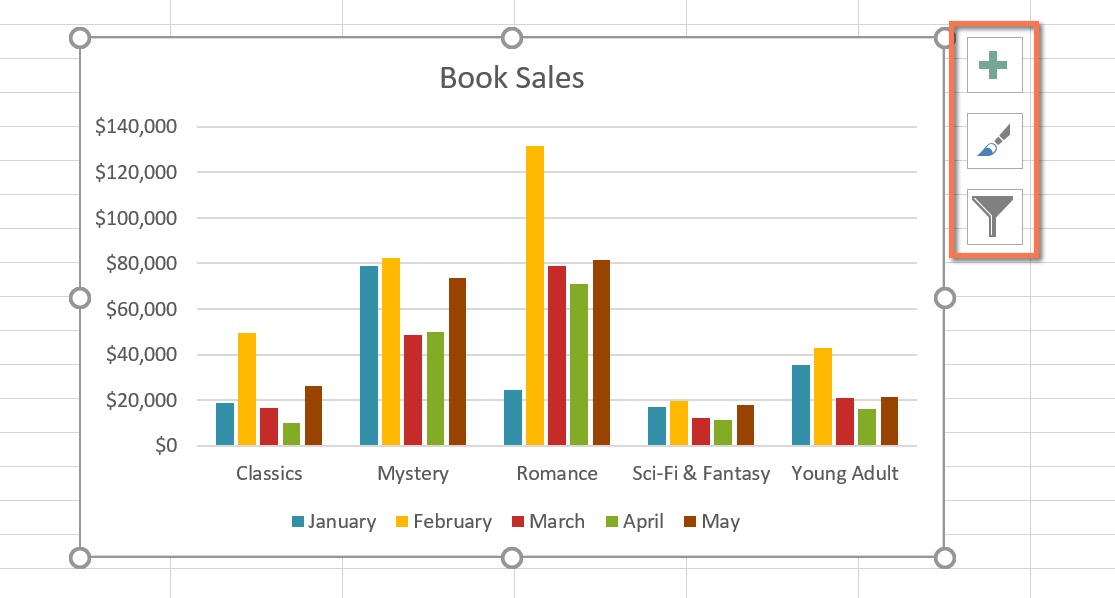
Other chart options
There are many other ways to customize and organize your charts. For example, Excel allows you to rearrange a chart’s data, change the chart type, and even move the chart to a different location in a workbook.
To switch row and column data:
Sometimes you may want to change the way charts group your data. For example, in the chart below Book Sales data is grouped by genre, with columns for each month. However, we could switch the rows and columns so the chart will group the data by month, with columns for each genre. In both cases, the chart contains the same data—it’s just organized differently.
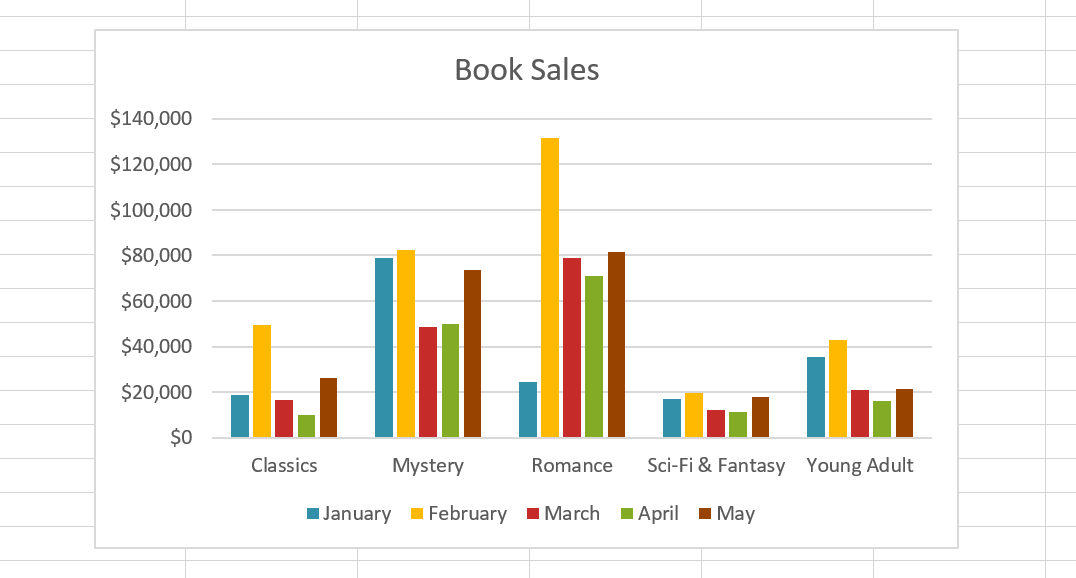
- Select the chart you want to modify.
- From the Design tab, select the Switch Row/Column command.

- The rows and columns will be switched. In our example, the data is now grouped by month, with columns for each genre.
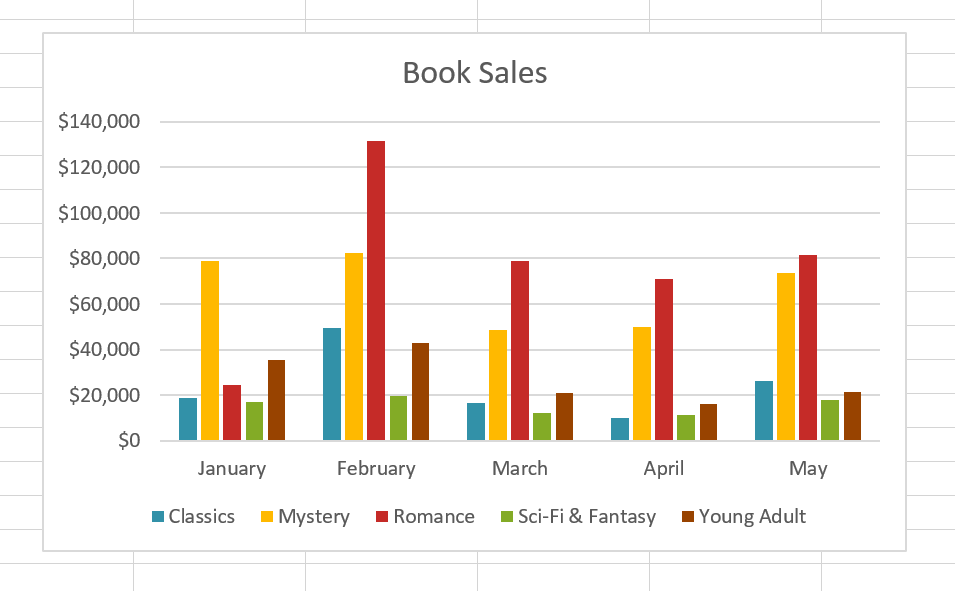
To change the chart type:
If you find that your data isn’t well suited to a certain chart, it’s easy to switch to a new chart type. In our example, we’ll change our chart from a column chart to a line chart.
- From the Design tab, click the Change Chart Type command.

- The Change Chart Type dialog box will appear. Select a new chart type and layout, then click OK. In our example, we’ll choose a Line chart.
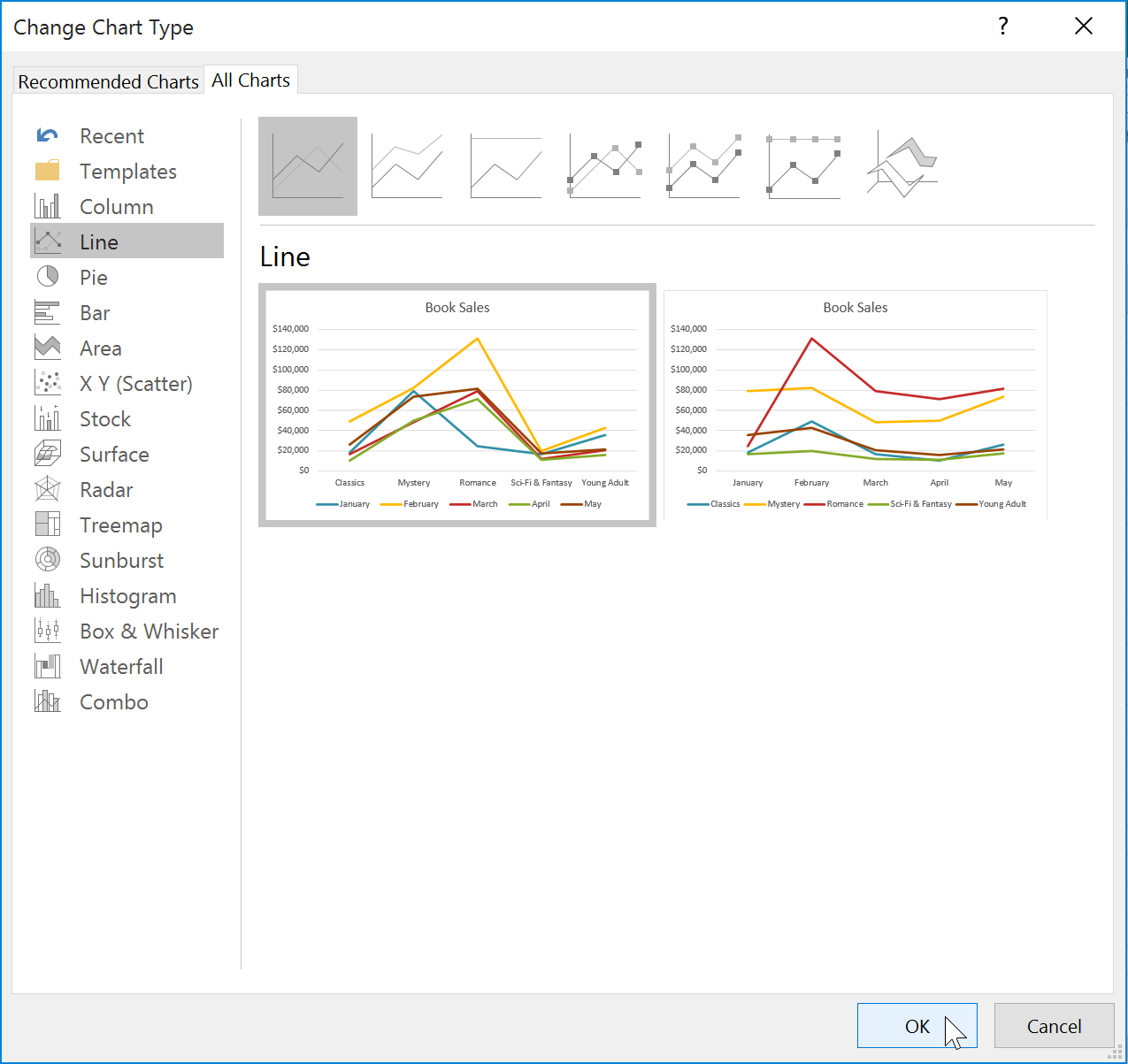
- The selected chart type will appear. In our example, the line chart makes it easier to see trends in sales data over time.
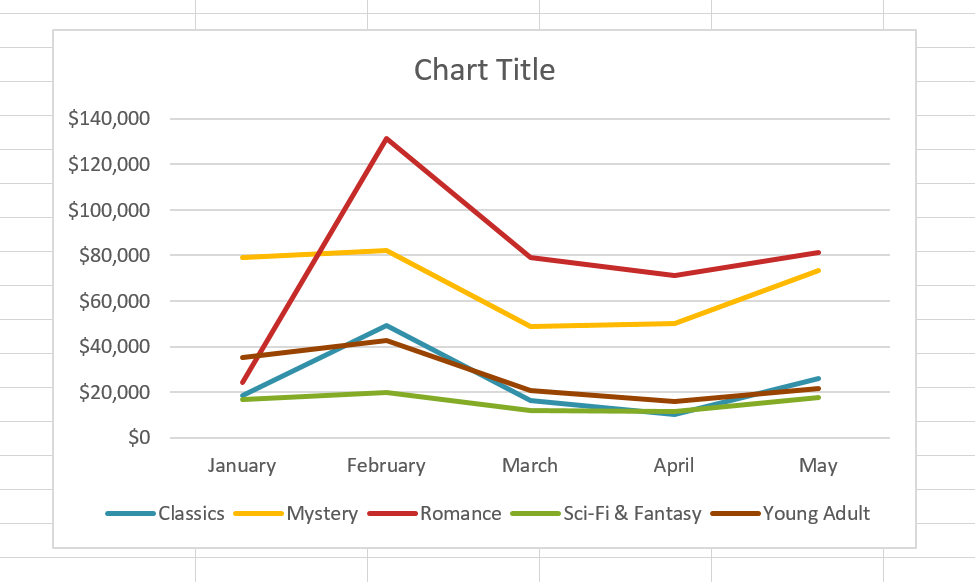
To move a chart:
Whenever you insert a new chart, it will appear as an object on the same worksheet that contains its source data. Alternatively, you can move the chart to a new worksheet to help keep your data organized.
- Select the chart you want to move.
- Click the Design tab, then select the Move Chart command.

- The Move Chart dialog box will appear. Select the desired location for the chart. In our example, we’ll choose to move it to a New sheet, which will create a new worksheet.
- Click OK.
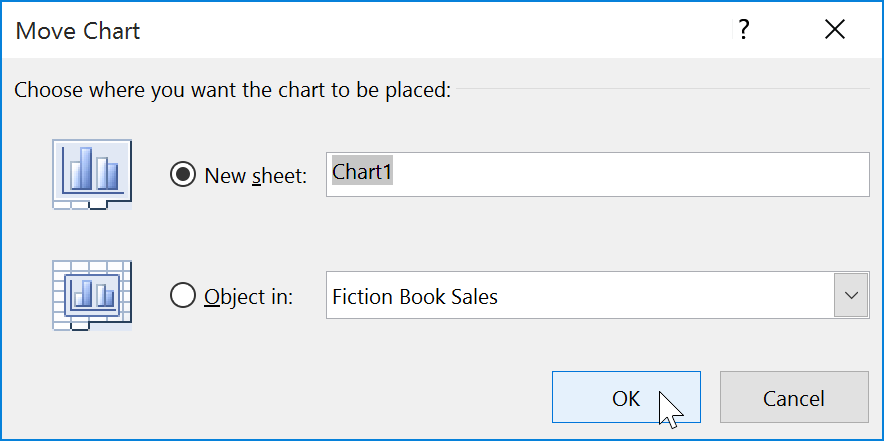
- The chart will appear in the selected location. In our example, the chart now appears on a new worksheet.
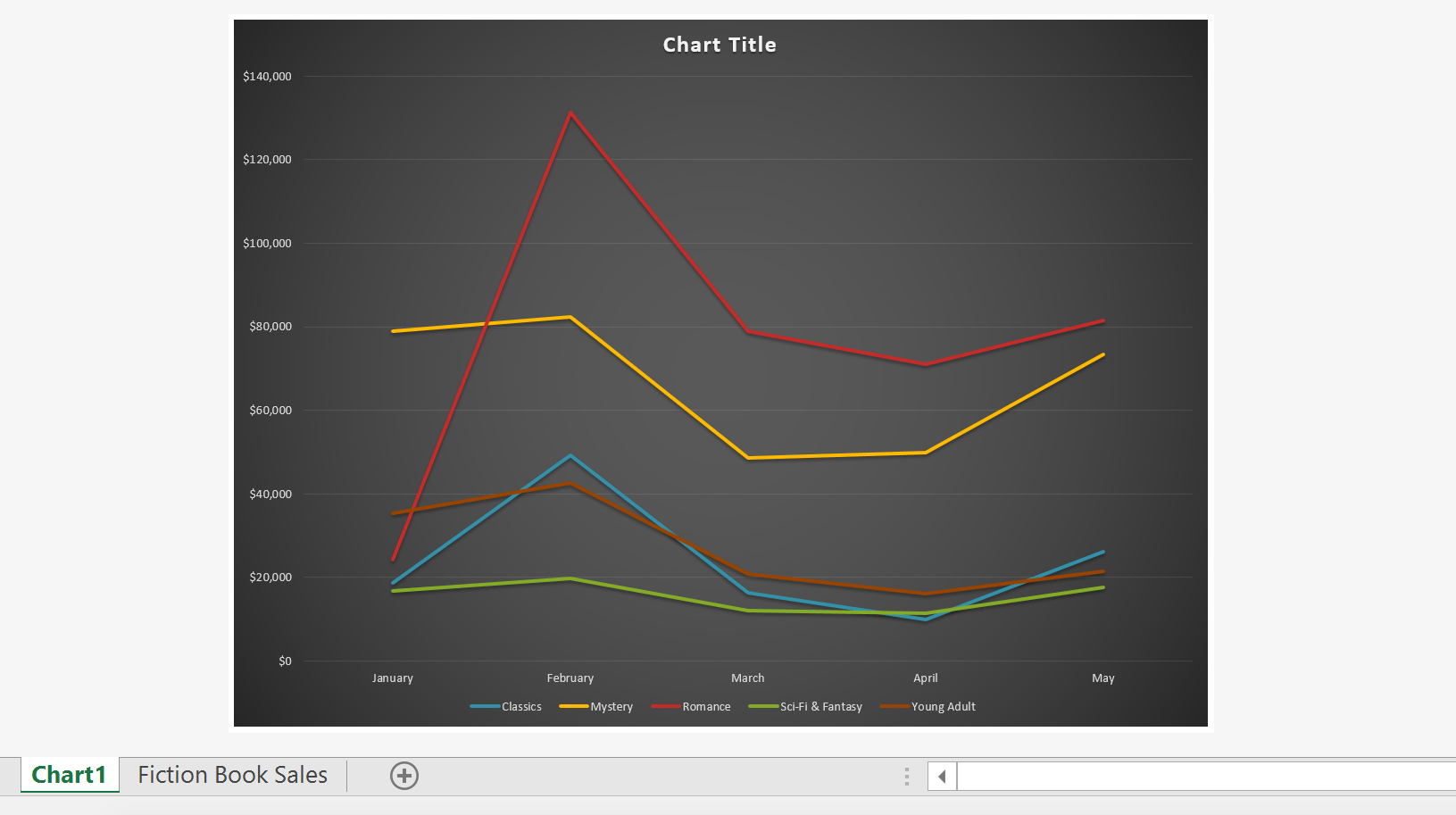
Keeping charts up to date
By default, when you add more data to your spreadsheet, the chart may not include the new data. To fix this, you can adjust the data range. Simply click the chart, and it will highlight the data range in your spreadsheet. You can then click and drag the handle in the lower-right corner to change the data range.

About Us
Kumail.pk is a Free Platform of Education initiated by Syed Kumail Hassan Shah (Director GIT Education)
